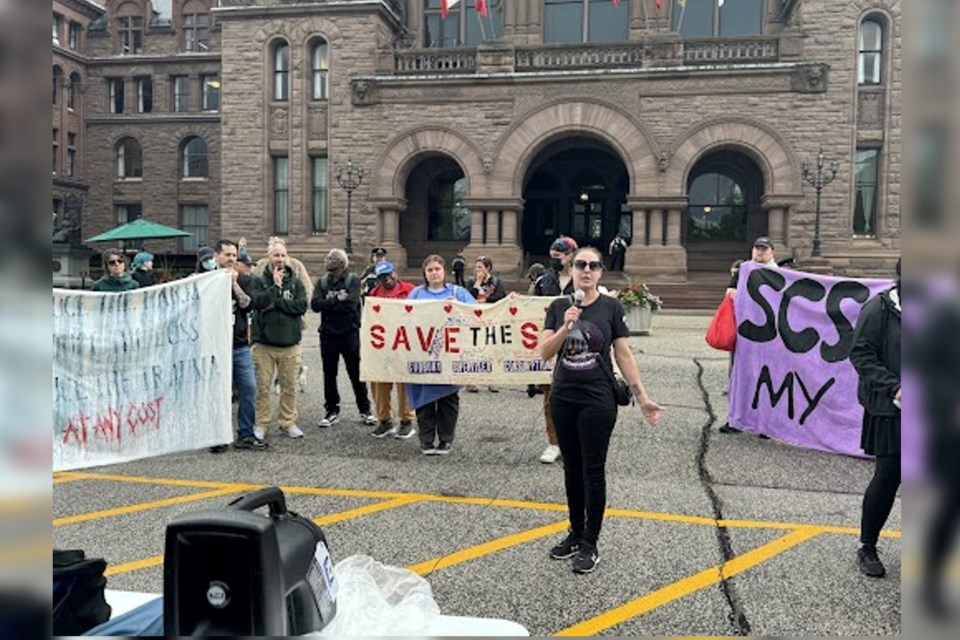In the three months since the closure of The Spot, Sudbury’s only sanctioned supervised consumption site, former manager Amber Fritz told Sudbury.com it’s sorely missed by users.
She also cautioned that the ramifications of its closure are only beginning to pile up.
Initially funded by the City of Greater Sudbury as a stop-gap before provincial funding came in, the Progressive Conservative government declined to come to the plate.
City council ceased funding for the service, which falls under provincial jurisdiction. Vale and anonymous donors filled in the funding gap for a while, but it finally closed on March 29.

Since then, Timmins has also shut due to lack of funding, and the Barrie site was forced to rescind their application before opening, due to lack of funds.
Now, the only supervised consumption sites open in the province are in southern Ontario, plus one in Thunder Bay.
The review that caused the applications to be suspended was completed this year, and yet Fritz said they’ve yet to receive word from the province. The review reports are not yet public.

Now working for Reseau ACCESS Network as manager of outreach and education, Fritz said The Spot left its mark on Sudbury’s vulnerable community.
“I have bumped into a few folks that used to use the site with regularity, and the first thing they say after they say hi is, ‘so what's going on with that place? Do you think it's going to open?’”
She said the lack of transparency in the process has been difficult for many reasons, but more than anything, she is frustrated by not knowing what to tell the site’s former users.
“If I can say to folks, ‘Hey, we've been told no, it's done. It's toast,’ then at least there's no false hope thinking that it may open again because I don't know what the future holds,” Fritz said.
She doesn’t want to push site users away either, because if the site re-opens, it could be difficult to get anyone to return, leaving them to rebuild trust from square one.
The Spot’s funding application with the province will be three years old as of Aug. 21.
“Three years we've been waiting and we have heard nothing, except, ‘There's a review, continue to wait.’ We have had no communication, and it's incredibly frustrating,” Fritz said.
“We're trying to support people who depended on a life-saving service that was also a lifeline to other services, a place that created safety and community. And that's just no longer an option, at least in that context.”
A recent increase in open drug use can be attributed to both warmer weather and the site’s closure, Fritz said.
“It's beautiful out and people want to be outside, whether you're a drug user or not,” she said. “But of course, there is no longer an option for people who would want to use inside. Even if you didn't want to be out there, you no longer have a choice. If you would rather be somewhere private and out of the public eye, your options are behind a dumpster, or cowering in an alleyway.”
Those who have a residence can use substances at home, but that means they are often using alone, where the risk of death or injury goes up significantly.
A recent report from the Ontario Chief Coroner states that the majority of opioid deaths between 2018-2023 were in a private residence.
“Drug poisonings are a consistent feature when you have a toxic unregulated supply,” Fritz said, speaking of adulterants such as Benzodiazepines and Xylazine which are nervous system depressants that don’t respond to Narcan.
Fritz said for the past few months, the numbers haven’t changed greatly, with the same number of people overdosing
“The team has been fortunate, knock on wood, to only have responded to a few recently,” she said. “But, it seems like when that happens, it's almost the calm before the storm.”
Though death from poisoning is often cited as the evidence of the crisis, there is also injury that comes with using adulterated substances, including traumatic brain injuries.
“If someone's brain is deprived of oxygen, because they're not breathing — which is exactly what happens when someone experiences an opioid poisoning — if the person doesn't start breathing in a certain amount of time, they will have irreversible brain damage,” Fritz said.
She added that there are also long-term mobility issues, people who have not regained full use of a limb or a hand after a substance poisoning,
“Because they're so heavily sedated, some will trip and smack their head on the curb,” she said, adding that when The Spot was open these incidents could have been prevented.
“So many different levels of safety have just been removed,” she said. “It's the fact that the option is no longer even there, when there are so few options to begin with. It is horrifying to me because people deserve choices, they deserve options, they deserve to have services that meet their needs, and that they feel safe in.
She said the toxicity of the supply means there are also long-term effects that have yet to appear.
“Who knows what the long term consequences will be for our health-care system?”
Jenny Lamothe covers vulnerable and marginalized communities for Sudbury.com